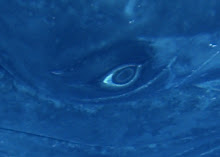At least 500 dolphins have been found dead on beaches in northern Peru. The cause of death is under investigation according to The Peruvian Sea Institute, or IMARPE, which sent a team of scientists to investigate why the dolphins beached themselves in the northern regions of Lambayeque and Piura.
The mass mortality event (MME) is occurring at the same time of year as an MME in 2012. No cause was definitely established.
The Peruvian team covered a 142-kilometer (88-mile) stretch of coast on Jan. 28-29, traveling from Pimentel, a resort city in Lambayeque, to the southern part of the reserve in Illescas, located in Piura. This is the same area of beach investigated by BlueVoice in February, 2012.
“In five hours we found more than 600 dead dolphins,” said Hardy Jones, executive director of BlueVoice.org. In the most recent case, experts found at least 400 beached dolphins. That discovery comes after about 100 other dolphins beached themselves in recent weeks.
Fishermen told the IMARPE team that the dolphins were caught in nets regularly and drowned, according to the Lima newspaper El Comercio. “During 2012 all the dolphins we documented were unmarked showing no signs of net entanglement,” according to Jones.
The IMARPE scientists, confirmed that some young and adult dolphins died at sea and others arrived on the beaches near death.
Tests conducted on tissue samples in Lima determined that the marine mammals were not poisoned by fishermen and did not die from the effects of extractive activities in the regions. The marine mammals may have died from ingesting toxic algae, the head of IMARPE’s Lambayeque office, Jaime de la Cruz, told El Comercio.
Dolphins migrate to the Peruvian coast at this time of year to mate and feed, De la Cruz said.
A report on the 2012 MME ruled out some possible natural causes of the deaths, including lack of food, bacterial infections, viral infections and biotoxins. But there is no concensus that viruses were not involved. Some forms of morbilla virus can only be detected by highly sophisticated scientific apparatus. Morbilla is the leading suspect in the MME off the Atlantic coast of the USA.
“The fact is that no one really
knows why these dolphins are dieing. It is occurring at a time when large
numbers of dolphins are dieing along both the Gulf coast and the Atlantic
coasts of the United States,” said Jones. “These catastrophes must be
investigated and the causes found. There may be profound implications for human
as well as dolphin health,” according to Jones

No comments:
Post a Comment